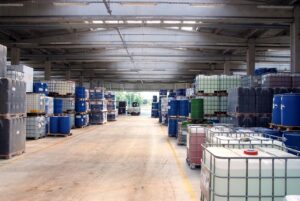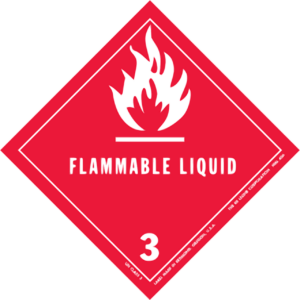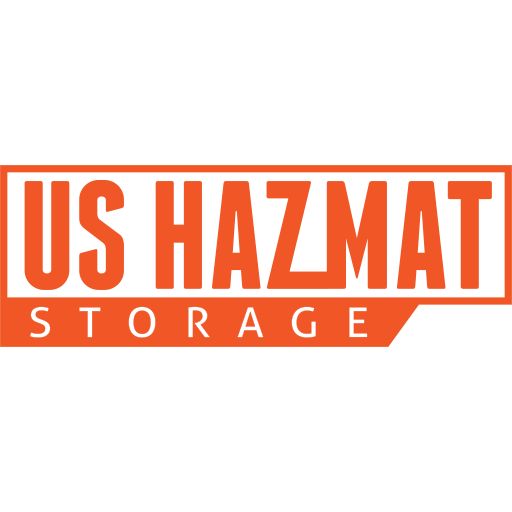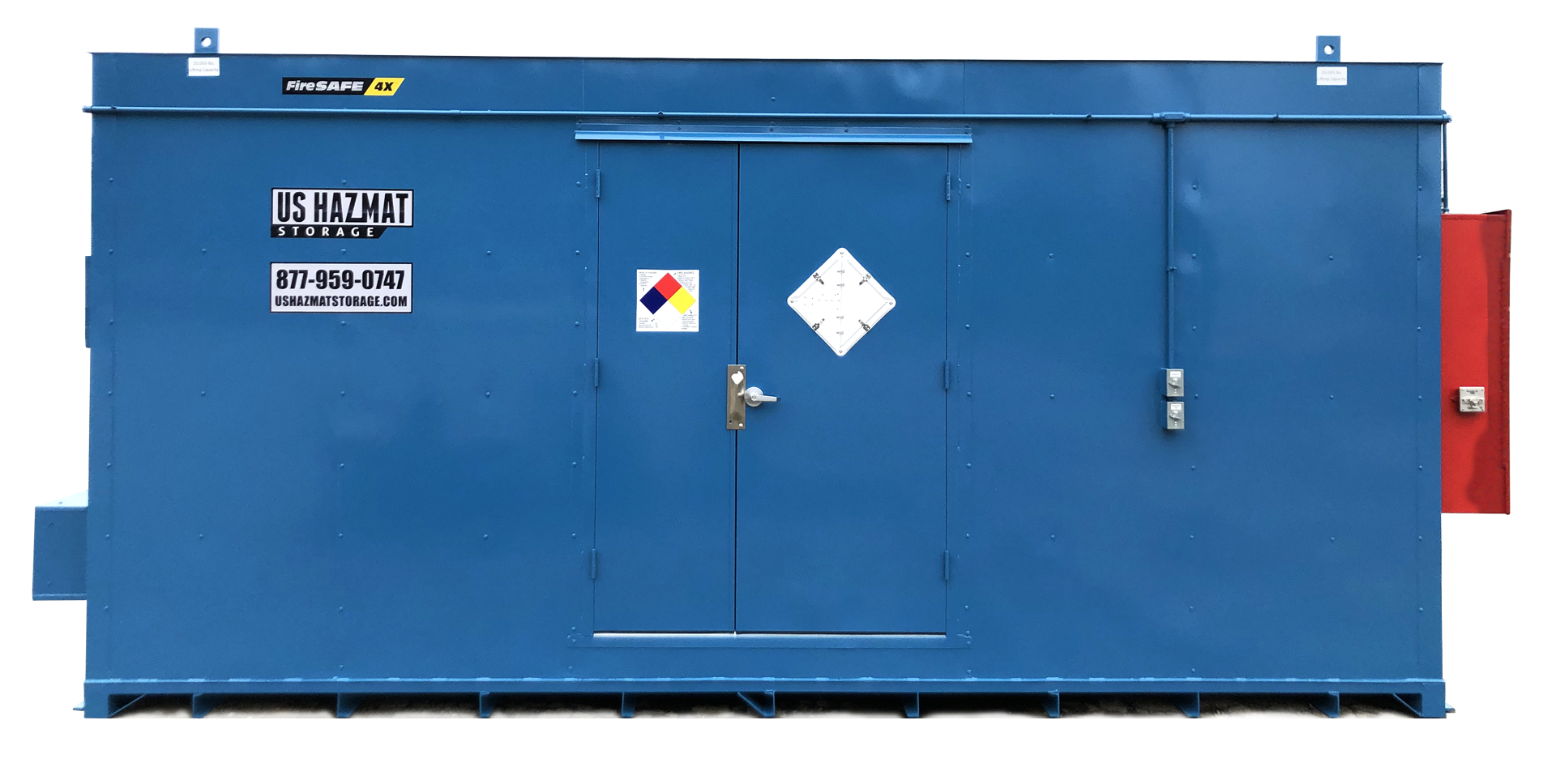NFPA 30 Section 9.5 concerns compliant flammable storage protection. While browsing for chemical storage options, you’ve undoubtedly encountered NFPA 30 references. The National Fire Protection Association is an international non-profit think tank tasked with developing universal standards and practices for safely handling and storing hazardous materials. Although NFPA regulations are not enforceable, OSHA commonly uses NFPA 30 standards to adopt its robust body of workplace safety standards. Failure to abide by OSHA regulations or not following NFPA 30 standards can result in safety violations, hefty fines, or jobsite accidents. Our fire-rated hazardous materials storage lockers meet all NFPA 30 and OSHA standards for handling dangerous chemicals.
What Does NFPA 30 Section 9.5 Cover?
NFPA 30 Section 9.5 covers flammable liquids and acceptable construction for safety cabinets and storage lockers. Flammable liquids are any liquid having a flashpoint at or below 199.4 degrees Fahrenheit (93 degrees Celsius). Ethanol, alcohol, hydraulic fluids, acetone, ether, kerosene, and petroleum products are common examples of flammable liquids found on most jobsites.
Below is the NFPA 30 classification list for flammable and combustible liquids:
- Class I Liquids: Flammable liquids that have a flash point below 100°F (37.8°C). They are further divided into three categories based on their volatility:
- Class IA: Liquids with a flash point below 73°F (22.8°C) and a boiling point below 100°F (37.8°C).
- Class IB: Liquids with a flash point below 73°F (22.8°C) and a boiling point at or above 100°F (37.8°C).
- Class IC: Liquids with a flash point at or above 73°F (22.8°C) and below 100°F (37.8°C).
- Class II Liquids: Combustible liquids with a flash point at or above 100°F (37.8°C) and below 140°F (60°C). They are also divided into three categories based on their flash points.
- Class IIIA Liquids: Combustible liquids with a flash point at or above 140°F (60°C) and below 200°F (93.4°C).
- Class IIIB Liquids: Combustible liquids with a flash point at or above 200°F (93.4°C).
How Much Flammable Liquids Can I Safely Store?

OSHA says no more than 25 gallons of flammable or combustible liquids may be stored in a room outside of an approved storage cabinet. Additionally, OSHA requires no more than 60 gallons of flammable liquid (flashpoint below 140 degrees F) or 120 gallons of combustible (flashpoint at or above 140 degrees F) can be stored in a single chemical storage container or warehouse. Additionally, NFPA 30 warns against storing more than 120 gallons of Class IB, Class IC, Class II, or Class III liquids in containers. Finally, the NFPA caps any combination of Class IB, IC, or IIIA liquids in metal tanks or metal IBC containers – each not exceeding 793 gallons – at 1,585 total liquid gallons.
What Are the Requirements for Chemical Storage Lockers?
Although NFPA 30 regulations allow for the wooden construction of chemical storage lockers, we advocate a steel solution. Furthermore, NFPA 30 Section 9.5 stipulates storage cabinets should be “designed and constructed to limit the internal temperature at the center of the cabinet and 1 in. (25 mm) from the top of the cabinet to not more than 325°F (163°C), when subjected to a 10-minute fire test that simulates the fire exposure of the standard time–temperature curve specified in ASTM E 119, Standard Test Methods for Fire Tests of Building Construction and Materials.”
What Should a Chemical Storage Locker Be Comprised of?
NFPA 30 Section 9.5 for metal safety cabinets requires the “bottom, top, door, and sides of the (storage) cabinet shall be at least No. 18 gauge sheet steel and shall be double-walled.” Moreover, OSHA has stipulations for material strength. Per governmental regulation, all chemical storage lockers should be made up 18 gauge steel sheet protection from top to bottom. Furthermore, all hazmat lockers should have a three-latch door arrangement. All joints should also be riveted, welded, or made tight. Furthermore, the NFPA also says the door sill of the container should be raised at least two inches above the bottom of the cabinet to retain spilled liquid inside the storage locker.
Chemical Storage Locker Warning Signs

NFPA 30 Section 9.5 says each storage cabinet or chemical warehouse should display “FLAMMABLE” and “KEEP FIRE AWAY” signage and markings. The letter height for “FLAMMABLE” should be two inches while the minimum letter height for “KEEP FIRE AWAY” should be one inch. Furthermore, all letters should be uppercase and in contrasting color to the background. Additionally, the lettering should be placed on the upper part of the locker’s front doors or frame.
NFPA 30 Ventilation Requirements
While NFPA 30 Section 9.5 doesn’t require ventilation for safety cabinets and warehouses, it provides parameters for either variation. If the storage locker is not ventilated, NFPA 30 says the vent openings “must be sealed with the bungs supplied with the cabinet or with bungs specified by the cabinet manufacturer. For ventilated storage cabinets, NFPA 30 Section 9.5 says “the vent openings shall be ducted directly to a safe location outdoors or to a treatment device designed to control volatile organic compounds (VOCs) and ignitable vapors in such a manner that will not compromise the specified performance of the cabinet and in a manner that is acceptable to the authority having jurisdiction.”
Compliant Chemical Storage Protection

While you might find NFPA 30 Section 9.5 safety standards encumbering to workflow operations, industrial manufacturers and contractors should strictly abide by all OSHA regulations. OSHA and NFPA 30 standards are designed for employee protection and the safe handling of flammable liquids. All U.S. Hazmat Storage lockers and safety cabinets meet NFPA 30 Section 9.5 standards, ensuring continuous onsite protection. Contact us today for a free quote and consultation.


